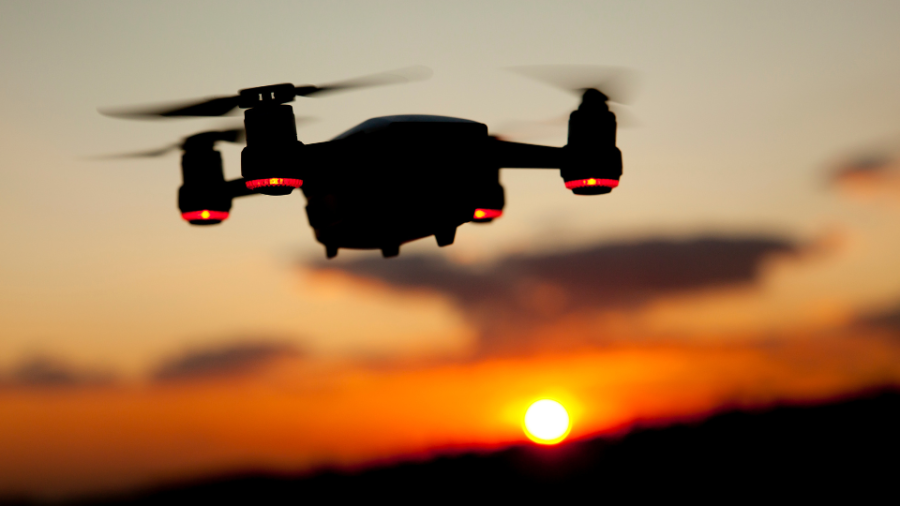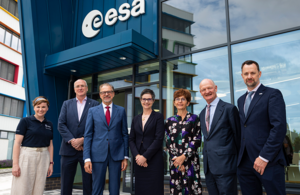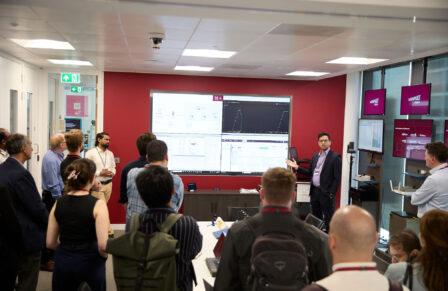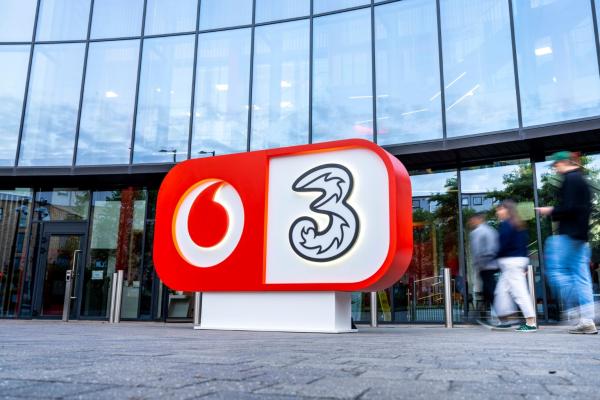Drones and high-altitude aircraft could boost connectivity in remote areas and support emergency services, following new government funding.


From left: Meganne Christian, Reserve Astronaut and Exploration Commercialisation Lead for the UK Space Agency, Nick Appleyard, Acting Head of Establishment for ECSAT, Josef Aschbacher, Director General of ESA, Chloe Smith, Secretary of State for Science, Innovation and Technology, Magali Vaissiere, former Director of ESA’s Telecommunications Activities and Head of ECSAT, Lord David Willetts, Chair of UK Space Agency and Dr Paul Bate, Chief Executive Officer UK Space Agency. Credit: ESA/Max Alexander.
ARTES: UK National Delegate Support for the “Aerial Connectivity” Call
Secretary of State for Science, Innovation and Technology Chloe Smith announced the £20 million funding from the UK Space Agency – the biggest investment into these types of services to date – to support the development of future telecommunications technologies and aerial connectivity projects, which would be used onboard drones or high-altitude platforms to provide wireless coverage.
Companies can bid for the funding to develop innovative aerial services and technologies that will support a range of industries, for example drones delivering medical supplies to hospitals, providing dedicated connectivity for emergency services or bringing internet access to rural areas.
The Technology Secretary unveiled the support during a speech at the opening of the European Space Agency’s state-of-the-art new conference centre at the Harwell Space Cluster, in Oxfordshire, which is home to over 100 space organisations employing more than 1400 people.
Technology Secretary Chloe Smith, said:
From using drones to quickly get medicines to hospitals, through to boosting mobile network access in remote areas, the benefits of aerial connectivity cut through many aspects of our lives.
The Government’s £20 million investment will further strengthen the UK’s fast-growing satellite communications industry, which already contributes more than £10 billion to our economy and supports over 26,000 jobs. It will improve our health and security, too, and support our plan to level up every part of the UK.
Projects could include developing connectivity for aerial platforms with hybrid capabilities that can seamlessly switch between satellite and terrestrial networks, or traffic management for innovative vehicles such as electric vertical take-off and landing (eVTOL) aircraft, or ‘flying taxis’.
The funding is part of the European Space Agency (ESA) Advanced Research in Telecommunications Services (ARTES) programme. Future telecommunications is one of five critical technologies identified by the government in the UK Science and Technology Framework, and the UK is a leading investor in ARTES, having committed £190 million to the programme in November 2022.
The announcement came at the opening of a new conference centre at the European Centre for Space Applications and Telecommunications (ECSAT), named after former ESA director and head of ECSAT, Magali Vaissiere. The facility will serve as a rallying point for the UK space community, reinforcing existing ties and fostering new partnerships within Europe and beyond. The UK Space Agency contributed £7 million to the project.
Dr Paul Bate, Chief Executive of the UK Space Agency, said:
The new state-of-the art conference centre at ECSAT is a very welcome addition to the world-class science campus at Harwell, offering an attractive base for collaboration and networking between people working in the space sector and beyond.
UK Space Agency funding for the facility demonstrates our ongoing commitment to working closely with the European Space Agency to catalyse investment, deliver new missions and capabilities, and champion space across the UK – showing once again that space is a team sport.
Harwell campus is a key enabler of the booming UK space industry and the conference centre adds to ESA’s existing contributions to this rapidly expanding community of commercial, public and academic enterprises.
The facility will boost innovation on campus by promoting collaboration between its health, quantum, energy and space clusters.
Josef Aschbacher, ESA Director General, said:
The UK has a strong track record for innovation in telecommunications and we are proud to work with our UK partners to develop innovative technologies that will support industries across the economy by boosting aerial connectivity.
This activity demonstrates the excellent cooperation between the UK and ESA, and is a great example of how the seamless connectivity delivered by space-enabled 5G is set to transform society and industry.
The funding announced today is in addition to the £50 million ARTES funding announced in January to back a wide range of projects, such as developing new satellite constellations, the ground systems needed to access them, or whole end-to-end systems delivering new services to customers.
Chris McLaughlin, Secretary of the HAPS Alliance, said:
High-altitude platform stations have the potential to enhance connectivity in remote areas and aid emergency services in natural disasters. The HAPS Alliance applauds the development of innovative aerial services and technologies, such as HAPS-dedicated connectivity for emergency response.
The investment underscores the industry’s commitment to future telecommunications and reinforces partnerships within the space community, driving transformative advancements in aerial connectivity.
ARTES: UK National Delegate Support for the “Aerial Connectivity” Call









